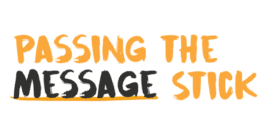What makes people care?

17 August 2021 at 7:55 am
Those involved in advocacy and campaigning need to use the science of what makes people care as a foundation for their strategy, writes Neil Pharaoh, who looks at the five principles that help organisations connect their work to what people care about.
I am an avid reader of a couple of journals, one of them being the Stanford Social Innovation Journal. It recently featured an article “The science of what makes people care”. This article really hit a chord, so for this fortnight’s column, I have taken their five principles and transitioned them to the Australian context.
I wish many involved in advocacy and campaigning in Australia would remember that to gain influence on your issue you need to understand what compels people to invest their attention, emotion and action. In short, you need to use the science of what makes people care as a foundation for your strategy.
Here are the five principles listed by SSIR that will help organisations connect their work to what people care most about:
- Join the community – identify a group whose change in behaviour could make a difference or inspire others and figure out how to bring that group value.
- Communicate in images – visual language helps people connect to your work.
- Invoke emotions with intention – think about what you are trying to get people to do, and how they would feel.
- Create meaningful calls to action – specific and connected to the cause.
- Tell better stories.
Join the community
In the Australian landscape this means understanding the group you need to engage, and recognising it may not be part of the echo chamber you are often caught talking to. I often mention in seminars my particular concern about a refugee sector leader who tweets with very vitriolic and preaching language. This language really fires up the base, and donations to their organisation from progressives and inner-city types go up whenever the commentary is read.
Yet, the soft middle of Australia hates the preachy tone and being told they are somehow morally inferior, and they switch off from engaging in the discussion, or shifting their view. This to me highlights what “join the community” really means when advocating and campaigning – do not speak to your base, do not lecture those who disagree with you, but take time to listen to concerns, engage in the community, and find leaders who that community aspires to, and get them showcasing a different point a view.
Put simply, if I rock up to somebody and call them racist/homophobic/sexist (amongst other things) they are not going to turn around to me and say “thanks Neil, I never knew I was racist/sexist/homophobic before, and now thanks to you I am going to change my opinion”.
Communicate in images
The social purpose sector works in very difficult and complex spaces, yet as humans we actually understand things better when things are visual. SSIR highlights that figurative language creates rhetorical advantage. When you write a letter or campaign, does it create vivid imagery? Can you see the future or the vision or the dream from the language you are using? What is the drawing of the future, and what does it look like? What image is in your mind when you are articulating your communications campaign? When I am working with clients, we simplify this often by asking, what is your “child friendly version” or “one page infographic” – all of which create more engagement in your communications and narrative.
Invoke emotion with intention
People actively avoid things which make them feel sad, fearful or guilty when they can’t see a direct way to resolve or solve the issue. Likewise, people are attracted to things that are pleasant, and SSIR research shows that a feeling of awe actually increases openness to learning and willingness to engage. When you look at parts of your campaign, does anything inspire or awe you? Will it do so to others?
A simple way of thinking about this is what we call working on the “solution” frame – what does it look like if you achieve what you want? How will it look in a story in the paper, a media release, or if told to a friend. Too often it is really easy to paint the problem, but if you can also include the solution, you are invoking emotion with intention.
Create meaningful calls to action
In short, your call to action should be specific, enable the community to see how they help solve the problem, and be something people know how to do. Too often we present a huge problem – poverty, climate change, injustice – and then ask an individual for a donation of $10. While we say every dollar counts, to the individual who donates they feel they actually have no power to produce results, and calls to action which leave people feeling that they will not make a difference leave a negative taste, even after a donation (the marketing study of this is called post-purchase dissonance – and is worth of an article in its own right around what our sector can learn from this).
Finally, tell better stories
We remember narratives, and stories enable us to be more empathetic to others in a way facts don’t. Stories have a beginning, a middle and an end – and while not all of them have a happy ending, almost everyone knows the key stories we read as kids: Snow White, Cinderella and others. We remember fairy tales read to us decades prior, but cannot remember the key facts or outcomes of some campaign we were involved in only last week.
One of the most powerful things you can see in advocacy is when people change their mind, or evolve their views. If I were to add a sixth point to the SSIR article, it would be to ensure you back up those who have changed or evolved to your view point, and congratulate and encourage them as equals. Dwelling on the past, or focusing on differences won’t encourage others to join.
About the author: Neil Pharaoh has spent most of his voluntary and professional life in and around social purpose organisations, government, public policy and advocacy. Neil has been behind many leading social policy and advocacy campaigns on gender rights, equality, medical research and education, and ran for Parliament in Victoria in 2014 and 2018. Neil is co-founder and director of Tanck, which focuses on better engagement with government, and regularly runs workshops and advocacy sessions and advises leading social purpose organisations on their government engagement strategy and systems.
Happenings on the hill is a fortnightly column focusing on all things politics, policy, campaigns and advocacy. Stay tuned for updates around political trends and elections, lobbying and advocacy news, and hints, tips and ideas on government engagement that are specifically written for the social purpose/for purpose sector.
If you have any ideas, suggestions, tips or questions, please feel free to email Neil Pharaoh at neil@tanck.com.au or reach out to him via social media at LinkedIn, Twitter, Instagram and Facebook.







